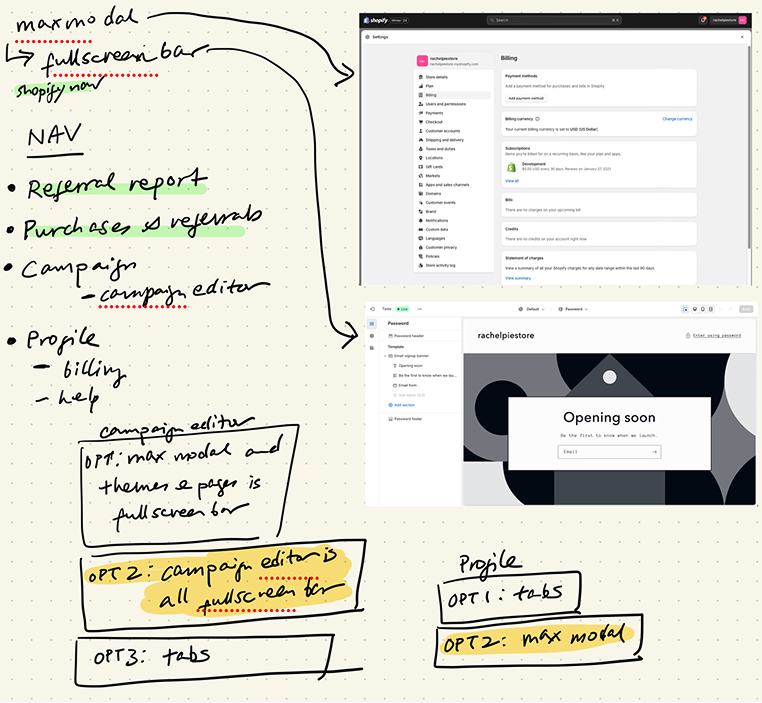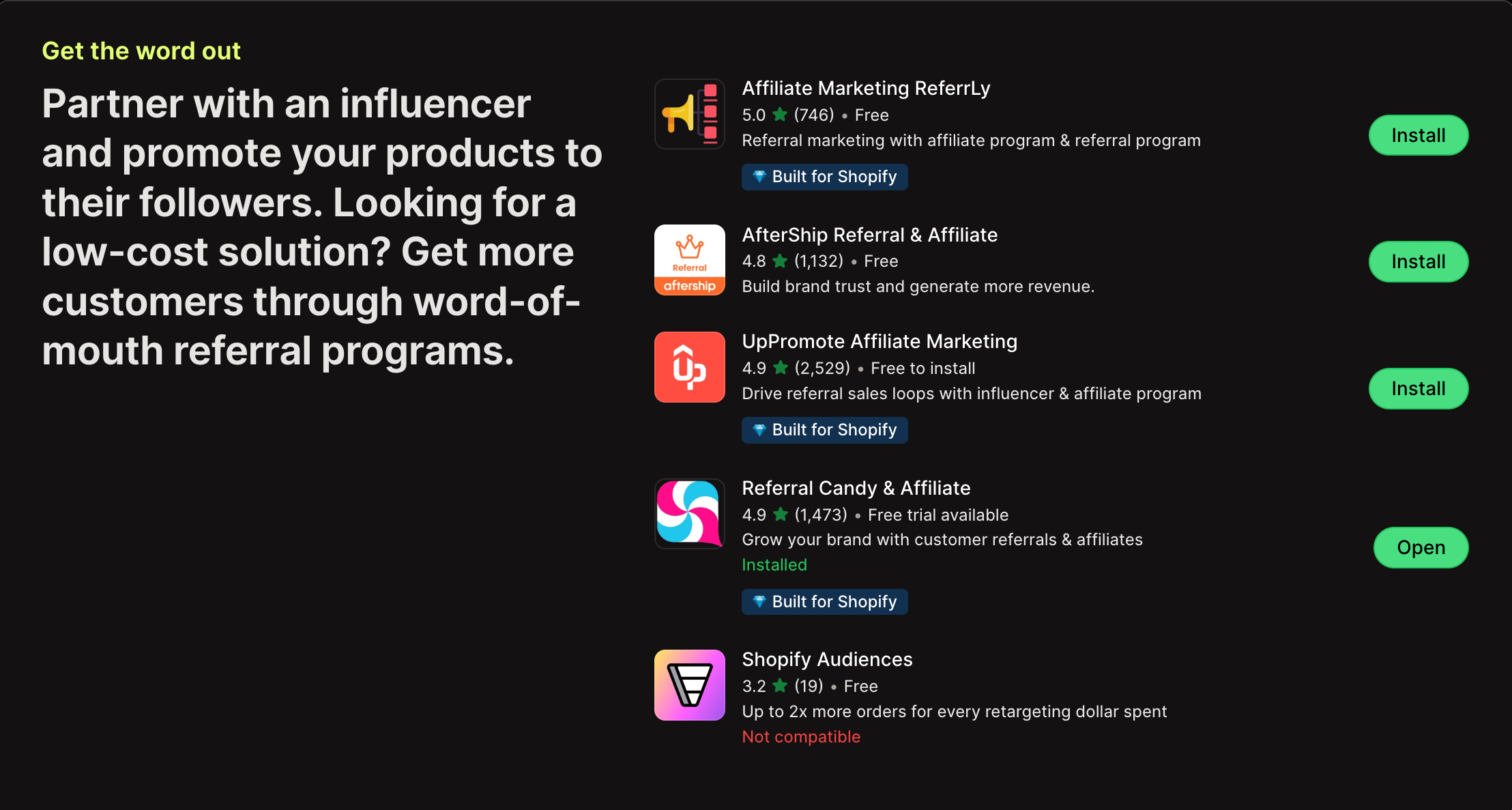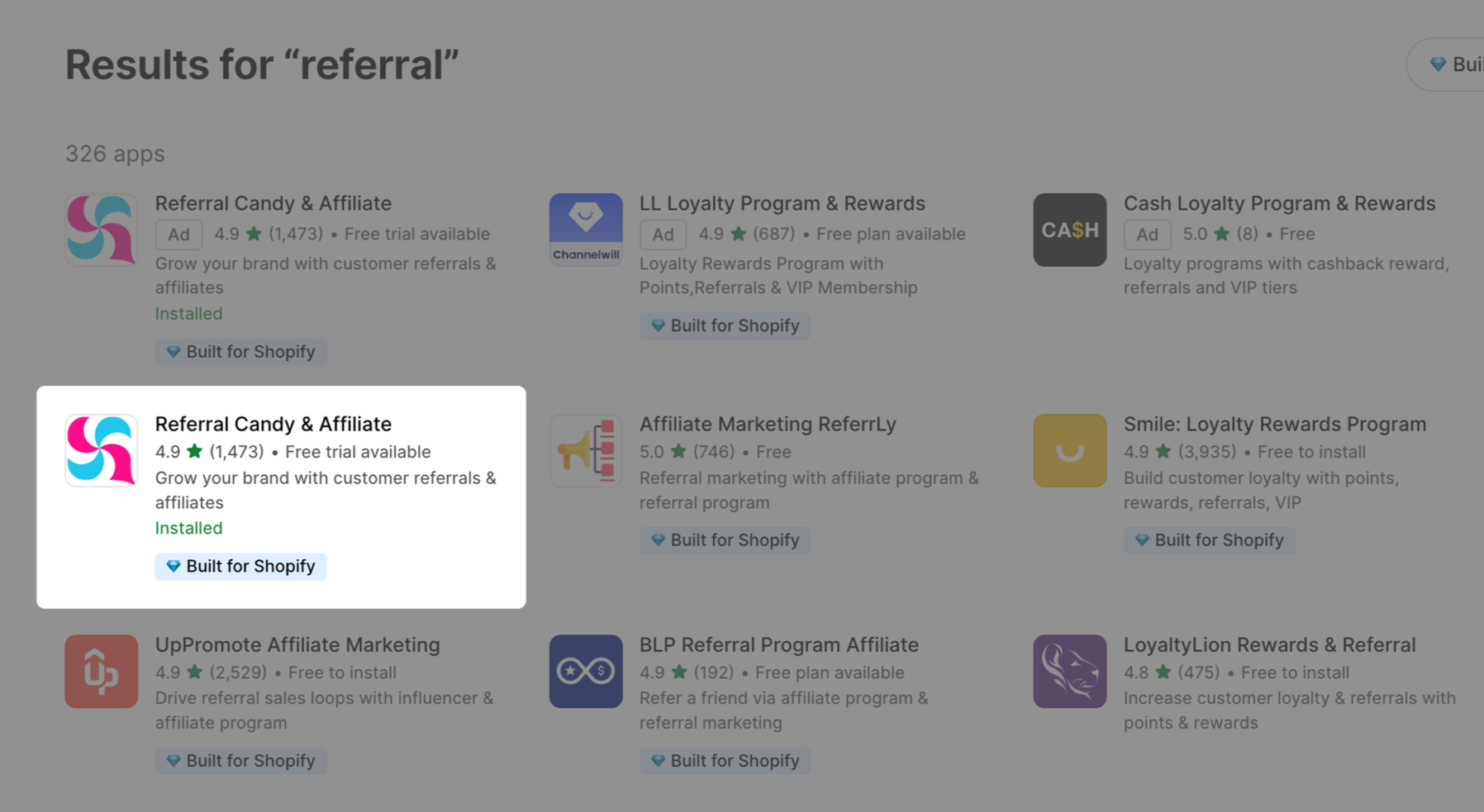Summary
I led the end-to-end design process to achieve Built For Shopify status for ReferralCandy, driving 7.6% increased signups and stronger app credibility.
Context
Built for Shopify (BFS) is Shopify's top app certification program. Not all apps can apply for BFS status, and those that need to meet certain performance, security, and design requirements.
Key business benefits include:
✔️ Search ranking priority
✔️ Exclusive ad targeting capabilities
✔️ Direct promotion opportunities from Shopify
Problem
Shopify informed ReferralCandy that it needed to achieve BFS certification within a year or risk losing our status as a Technology Track Partner. This meant that the sparse embedded app, which contained a single page and buttons redirecting users to an external web app, needed to house all key flows and features.
These flows had to adhere to their strict design guidelines and components, none of which the team had much prior knowledge or interaction with.
Other challenges included
Unclear requirements - guidelines for devs and design were often vague or contradictory
Design system gaps - Shopify's documentation was outdated, making it unclear which components were available or how to implement them correctly
Approach
1. We prioritized speed and reliability over innovation because we had limited time to design and build a completely new app
I studied Shopify's native design patterns and how existing BFS apps handled constraints. Devs modeled pages after these examples and I conducted QA directly in production. This unconventional, reverse-engineering approach allowed us to move quickly while ensuring compliance with BFS standards.
2. Iterating quickly helped us navigating unclear requirements
As some BFS guidelines were vague or contradictory, we knew we'd probably face multiple review rounds. So instead of trying to submit the perfect app, we focused on getting a functional version to Shopify's review team quickly.
This "fail fast" approach allowed reviewers to pinpoint specific issues early, which we could address in subsequent iterations rather than guessing at requirements.
3. Communicating directly with Shopify helped us bridge gaps
As we submitted our app → got rejected → reapplied → got rejected again, it became clear we needed more specific feedback on rejection reasons. I addressed this by jumping on calls and including video walkthroughs to eliminate guesswork and prevent further costly rework cycles.
Solution
The approved embedded app is integrated with Shopify’s native ecosystem and follows common Shopify design patterns
Revamping the sign-up flow led to a 7.6% jump
Before: Installation took several seconds and users were redirected to an external site to complete signup.
After: users remain in Shopify and are quickly shown the pricing page. A testimonial provided social proof. Only having one CTA button on the page reduced cognitive load.
Before
⮕
After
Users could perform key flows without leaving Shopify
This allowed for a seamless experience, reducing cognitive load and accelerating adoption.
Impact
✔️ Enhanced credibility - the sales team noted that leads were easier to convert and more confident to sign up. Shopify's seal of approval helped us inherit the trust merchants already had in the platform.
“The fact that you're on the highest level with Shopify is really important for us because I really don't want any rogue apps that don't support me.”
- 🦸♂️ D, brand marketing leadapps.
✔️ Increased visibility - the marketing team reported featured placements and received exclusive Shopify promotional opportunities.
✔️ Improved product focus - our customer success team and core user base delighted in a cohesive and more professional in-platform experience.









